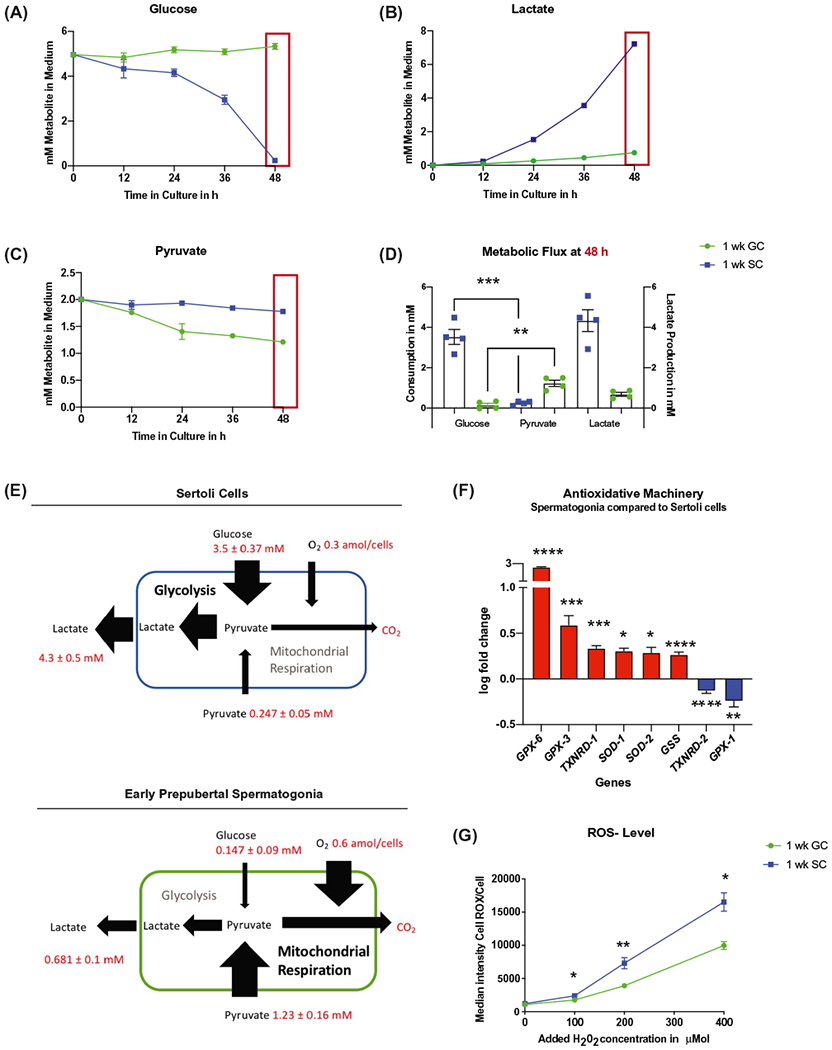FIGURE 3.

Early prepubertal spermatogonia use pyruvate to fuel OXPHOS and show high antioxidative resistance. A-E, Early prepubertal spermatogonia (GC, green) consume less glucose than Sertoli cells (SC, blue) and higher amounts of pyruvate. A-C, Representative time course of one biological replicate of glucose (A), pyruvate (B), and lactate (C) consumption over 48 hours of culture. D, Consumption of glucose and pyruvate after 48 hours of culture, mean ± SEM; glucose/pyruvate SC (n = 4, P = .0001); glucose GC/pyruvate GC (P = .001, n = 4); lactate production after 48 hours of culture (mean ± SEM; two-tailed, unpaired Student’s t test). E, Schematic illustration of metabolic flux in Sertoli cells (blue) and early prepubertal spermatogonia (green) under the experimental conditions tested; values are mean ± SEM after 48 hours of culture for 1 well with 150 000 cells. Oxygen consumption was estimated according to results with the Seahorse Flux analyzer and assumed to be consistent over 48 hours of culture for this illustration. F, Early prepubertal spermatogonia show upregulation of six out of eight differentially expressed antioxidative enzymes (P< .05, n = 4, Table S1). G, Early prepubertal spermatogonia have higher oxidative resistance than Sertoli cells (mean ± SEM of median intensity of CellROX Green in flow cytometry after increasing concentrations of H2O2 from 0 to 400 μMol (P < .03, n = 4) (two-tailed, unpaired Student’s t test, with Welch’s correction for 200 μMol)
